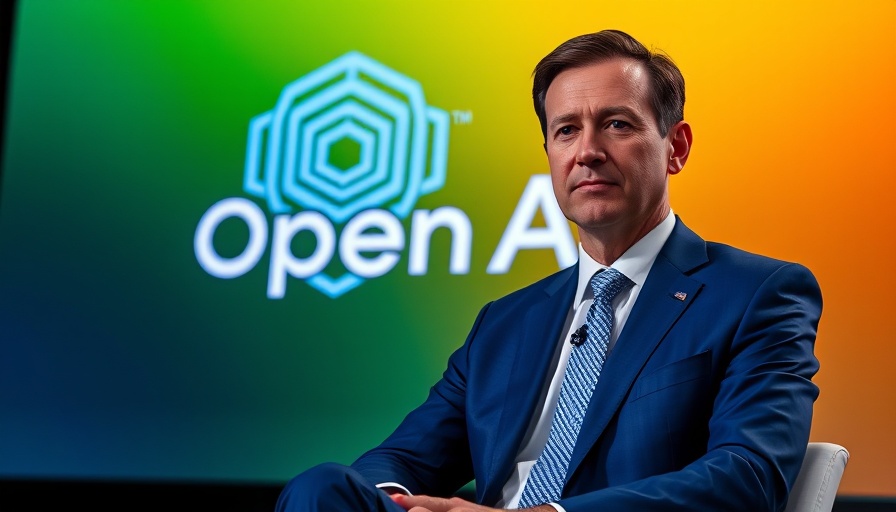
OpenAI's New $40 Billion Funding Round: What It Means
As excitement spreads through the tech community, OpenAI is gearing up to wrap up its latest funding round of $40 billion, as revealed by recent reports from Bloomberg. This round is spearheaded by SoftBank, the Japanese multinational conglomerate, which is aiming to invest a significant sum in the AI powerhouse. OpenAI's ambitions, bolstered by this funding, could reshape the landscape of artificial intelligence innovation globally.
The Surge in Funding: Details Behind the Investment
According to sources, SoftBank will kick off this massive investment with $7.5 billion upfront, alongside an additional $2.5 billion coming from a syndicate of other investors. Companies like Magnetar Capital and Founders Fund are also jumping in on the action, adding their own financial clout to this high-stakes investment. This first tranche alone signals powerful backing for artificial intelligence development, making OpenAI a focal point in the tech news today.
Following a Series of Successes
This funding follows OpenAI’s previous round in October 2024, which amounted to $6.6 billion led by Thrive Capital, and valued the company at $157 billion. As OpenAI prepares to close this new funding round, its valuation is projected to soar to an astounding $300 billion. Such significant increases in capital and valuation underscore the rapid growth and demand for AI technologies in various sectors.
The Context of AI Investments Today
The timing of this funding is especially crucial as organizations grapple with the growing importance of AI across industries, from healthcare to finance. The tech industry's latest innovations hinge on financial support for research and development, and OpenAI's success is a strong indicator of growing investor confidence in AI solutions. This aligns with trends seen in the tech news articles trending today, showcasing a fascination with the increasing capabilities of AI.
Potential Implications of the Funding
The financial windfall has prompted questions about what this influx of capital means for the future of OpenAI and its technologies. With the substantial amount raised, OpenAI can enhance its research and harness its AI capabilities to address pressing global challenges, such as climate change, healthcare accessibility, and more. Investors are eager to see how these funds will translate into innovative solutions that could very well define the next generation of technology.
What’s Next for OpenAI?
As we anticipate the closure of this funding round, industry observers wonder how OpenAI plans to allocate the resources efficiently. The investment offers OpenAI a vital opportunity to scale its operations, improve its technologies, and possibly expand its offerings. With global tech news outlets buzzing with excitement, the next few months will likely shed light on new initiatives and products resulting from this major investment.
Join the Conversation: Thoughts on AI's Future
The ongoing developments surrounding OpenAI's funding are not just of local interest but resonate on a global scale. As such, stakeholders across various sectors should watch carefully to gauge what this could mean for their businesses. Participation in discussions on forums or tech news platforms could provide valuable insights and perspectives on the implications of AI advancement and investment.
Final Thoughts on AI and Tech Investment Trends
OpenAI represents a catalyst for future tech innovations, and its funding rounds are more than just financial transactions—they are markers of the evolving relationship between technology and society. As we observe these trends in tech news updates, it's essential to remain engaged and informed about how such monumental investments may influence our world.
 Add Row
Add Row  Add
Add 



Write A Comment